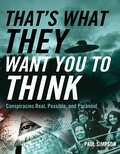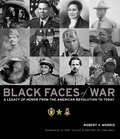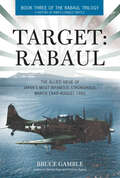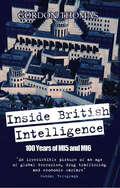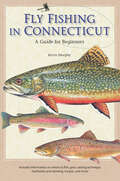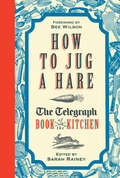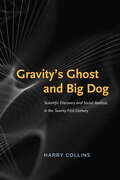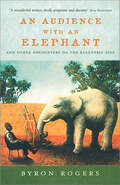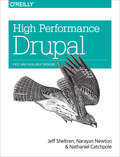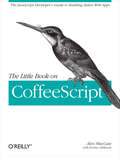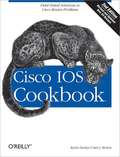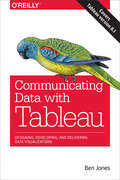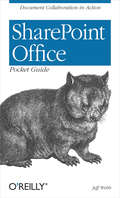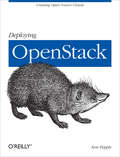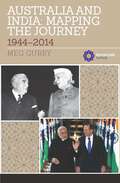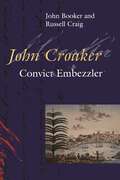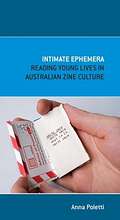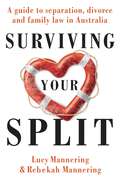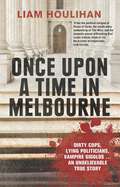- Table View
- List View
That's What They Want You to Think: Conspiracies Real, Possible, and Paranoid
by Paul SimpsonAn analysis of twenty-nine of the most famous theories, featuring assassinations, military operations, aliens, secret societies, and government conspiracies.Conspiracies. They happen every day. All it takes is a couple of people and a secret, nefarious plan. But then there are big conspiracy theories—the assassinations, cover-ups, and shadow governments that are endlessly debated on talk radio and the Internet. Are they real? Are they even possible? Or are they just plain paranoid?Paul Simpson has researched a wide variety of conspiracies, from those historically accepted to those that spark accusations of “being a part of it” if you disagree with their supporters. In reviewing these famous (and, in some cases, infamous) theories, That’s What They Want You to Think does not start from the position of a believer or a debunker. In each case, Simpson makes up his own mind based on the evidence of primary documents—and some of his conclusions may surprise even the most dedicated conspiracy researcher.Straightforward and engaging, That’s What They Want You to Think provides food for thought for both conspiracy buffs and skeptics. Novices and veteran researchers alike will debate the latest evidence and fresh takes on long-standing theories. Covering topics as diverse as the JFK assassination and faked moon landings, from the bombing of Pearl Harbor to Area 51 and the New World Order, Simpson makes you wonder if what you believe is real, possible, or paranoid.Praise for That’s What They Want You to Think“This lively book looks at a variety of conspiracy theories—many well-known, others not so much—from a historical, investigative point of view. . . . Well worthwhile.” —Booklist
Black Faces of War: A Legacy of Honor from the American Revolution to Today
by Robert V. MorrisThis commemoration of African-Americans in the U.S. military includes contributions from W. Stephen Morris and Luther H. Smith, one of the most-celebrated Tuskegee Airmen. Other black military heroes featured in the book include Crispus Attucks, the first man to die in the Revolutionary War; Lt. James Reese Europe, who brought jazz music to Europe in 1918; Lt. Charity Adams, commander of the only all-black Women's Army Corps unit during World War II; and Gen. Colin Powell, who served with distinction in Vietnam, became the first African-American Chairman of the Joint Chiefs of Staff during the Gulf War, and retired a four-star general before becoming the first African-American Secretary of State.
Target: The Allied Siege of Japan's Most Infamous Stronghold, March 1943–August 1945 (The Rabaul Trilogy)
by Bruce GambleA history of World War II’s Operation Cartwheel, a major Allied operation by US, Australian, and New Zealand forces to take the Japanese base at Rabaul.Prior to World War II, few Americans had heard of Rabaul, a small harbor town in a far-off corner of the Pacific. But it became a household name after the Japanese captured Rabaul in January 1942 and developed it into their most heavily defended fortress outside the home islands. Thereafter, Rabaul endured Allied air attacks for a total of forty-four months—a span unmatched by any other locale during World War II.In Target: Rabaul, respected military historian Bruce Gamble concludes his critically acclaimed trilogy about Japan’s most notorious stronghold. Picking up where Fortress Rabaul left off, Gamble narrates the story of Cartwheel, the multiple-operation plan that isolated Rabaul through aerial and naval siege. The effort, involving all of the armed branches of the United States, Australia, and New Zealand, resulted in some of the heaviest and most dramatic aerial combat of the Pacific war, with frequent clashes between hundreds of planes.The culmination of an amazing story, Target: Rabaul profiles the resolve of the Allied and Japanese combatants in the horrific Pacific battleground—and provides the turbulent, triumphant conclusion to the most comprehensive account of World War II’s longest battle.“Bruce Gamble has done it again! An impeccable researcher and a master storyteller with a keen eye for details and characters, Gamble presents Target: Rabaul, a powerful conclusion to his must-read trilogy on the battle over Japan’s Southwest Pacific stronghold. The heart-pounding stories of aerial combat read like a thriller—and show why he is one of the finest writers working today.” —James Scott, author of The War Below and The Attack on the Liberty
Inside British Intelligence: 100 Years of MI5 and MI6
by Gordon Thomas“Rollicking, readable new history of Britain’s famous spy organization.” —Los Angeles TimesA complete and up-to-date account of the two oldest and still the most powerful, secretive intelligence services in the world: MI5, the security service, and MI6, the secret intelligence service, which have been in existence for over a century. This is a story of spectacular triumphs, treachery, their frigid relationship, their untold work with the CIA, Mossad and the spy services of Europe, and their part in the fight against terror. It is also the story of two agencies led by men who are enigmatic, eccentric and controversial and who ruthlessly control their spies. From the unique partnership between Mossad and MI6, how MI5 and MI6 became a breeding ground for Soviet spies post-war, their exploitation of the collapse of the Soviet Union and their role in biological warfare, and including how both services monitor the spies of every nation based in London, it reads like fiction. But it’s not.Based on prodigious research and interviews with significant players Inside British Intelligence is packed with new and startling information.“An irresistible picture of an age of global terrorism, drug trafficking and economic warfare.” —Sunday Telegraph“ . . . a fascinating cast of moles and double agents, whistle-blowers and politicians. For the ambience of the closed world that inspired James Bond and George Smiley, this book is a winner.” —Publishers Weekly“A well-written page-turner.” —Kirkus Reviews“Thomas brings to the agencies histories a high level of expertise, a fluent style, accessible to lay reader and expert alike.” —Booklist
Fly Fishing in Connecticut: A Guide for Beginners (Garnet Books)
by Kevin MurphyProvides the essentials to launch a personal journey into the world of fly fishing In this book, a long-time resident and devoted fly fisherman imparts a wealth of knowledge about fly fishing in Connecticut. Kevin Murphy teaches novice anglers about the state's trout hatcheries and stocking programs, the differences between brook, brown, and rainbow trout, and offers easy-to-follow instructions on the basics of fly fishing. In this concise text, the reader finds the essentials in fly fishing gear, stream tactics, casting, and a host of related topics. In addition, would-be anglers gain a useful glimpse into the history of fishing in the state, plus important tips on stream conservation, fly fishing etiquette, regulations, and safety. Most importantly, anglers will find a veritable road map to Connecticut's best trout streams and rivers. The book even offers excellent suggestions for comfortable lodging in prime fly fishing locations and—once the day's fishing is done—a few mouth-watering recipes for cooking one's catch. Whether you're in the market for that first pair of waders, thinking of tuning up your casting technique, or just want to know where the fish are biting, this is the book to read.
How to Jug a Hare: The Telegraph Book of the Kitchen
by Sarah Rainey and Bee WilsonFeaturing a forward by a bestselling food writer from The Telegraph, this collection from the newspaper’s archives celebrates all things culinary.The opening of the Savoy in 1889, with Auguste Escoffier at the helm of its kitchen, rang in the new era of the celebrity chef. Though food is intrinsic to our very existence, the public’s interest was piqued and our pursuit of gastronomy has been on the rise ever since. Fortunately, The Telegraph has been there to document it.Trawling through the archives, features writer Sarah Rainey, has read through the great and the good as well as the more nostalgic recipes and culinary contemplations. Contributions from literary figures and their kitchens such as A.S. Byatt, sit beautifully alongside the slightly less erudite but equally wonderful entries that are a snapshot into the era they were written.The hidden gems of the past include interviews with “up-and-coming” chefs including Richard Stein, producing the best of New British Cooking in Padstow, not to mention the flamboyant Egon Ronay extolling the virtues of the “new” trend of coffee houses.Sometimes preventing hollandaise from splitting when you are sweating in a hot kitchen is just not worth it. So take some time out, sit down and read about what Mary Berry did before Great British Bake Off, how Heston Blumenthal wasn’t the first person to make weird flavours of ice cream and the trade tips from the perennially progressive Elizabeth David.With a foreword by food journalist and author Bee Wilson, this collection is the perfect gift for your favorite foodie or home chef.
Gravity's Ghost and Big Dog: Scientific Discovery and Social Analysis in the Twenty-First Century
by Harry Collins“In part an account of sociological fieldwork among scientists in the field and part astronomy-history mystery. . . . a terrific read.” —NatureGravity’s Ghost and Big Dog brings to life science’s efforts to detect cosmic gravitational waves. These ripples in space-time are predicted by general relativity, and their discovery will not only demonstrate the truth of Einstein’s theories but also transform astronomy. Although no gravitational wave has ever been directly detected, the previous five years have been an exciting period in the field. Sociologist Harry Collins offers readers an unprecedented view of the research and explains what it means for an analyst to do work of this kind.Collins was embedded with the gravitational wave physicists as they confronted two possible discoveries—“Big Dog,” fully analyzed in this volume for the first time, and the “Equinox Event,” which was first chronicled by Collins in Gravity’s Ghost. Collins records the agonizing arguments that arose as the scientists worked out what they had seen and how to present it to the world, along the way demonstrating how even the most statistical of sciences rest on social and philosophical choices. Gravity’s Ghost and Big Dog draws on nearly fifty years of fieldwork observing scientists at the American Laser Interferometer Gravitational Wave Observatory and elsewhere around the world to offer an inspired commentary on the place of science in society today.“The physics junkie or philosophy of science enthusiast . . . will find lots to mull over.” —Science News“Makes for very entertaining reading.” —Daniel Kennefick, University of Arkansas, author of Traveling at the Speed of Thought
An Audience with an Elephant: And Other Encounters on the Eccentric Side
by Byron RogersAn Audience with an Elephant is a compendium of the oddest and most eccentric travels—a travel book to set alongside Norman Lewis and Eric Newby for the sheer unpredictability of its encounters and its surreal comedy. But Bryon Rogers didn&’t venture to the ends of the earth to find singular custom and heroic idiosyncrasy: he had no need to. These are journeys to the heart of the strange and distant land of Britain. On his travels he meets the Turkish POW in British hands—an ancient tortoise captured at Gallipoli and now resident in Great Yarmouth—and the teenaged elephant who has opened more fetes and supermarkets than any TV celebrity. Here, too, are such bizarre figures as the octogenarian triathlete, the man who (before such things were banned) held every world eating record, and the last hangman in his untroubled retirement. Whether exploring the middle of England in the forgotten county of Northamptonshire or accompanying the last tramp through the wilder reaches of Wales, Byron Rogers chronicles a secret history of Britain that is touching, hilarious, magical and the extraordinary lives or ordinary people.
Programming Web Services with SOAP: Building Distributed Applications
by Pavel Kulchenko James Snell Doug TidwellThe web services architecture provides a new way to think about and implement application-to-application integration and interoperability that makes the development platform irrelevant. Two applications, regardless of operating system, programming language, or any other technical implementation detail, communicate using XML messages over open Internet protocols such as HTTP or SMTP. The Simple Open Access Protocol (SOAP) is a specification that details how to encode that information and has become the messaging protocol of choice for Web services.Programming Web Services with SOAP is a detailed guide to using SOAP and other leading web services standards--WSDL (Web Service Description Language), and UDDI (Universal Description, Discovery, and Integration protocol). You'll learn the concepts of the web services architecture and get practical advice on building and deploying web services in the enterprise.This authoritative book decodes the standards, explaining the concepts and implementation in a clear, concise style. You'll also learn about the major toolkits for building and deploying web services. Examples in Java, Perl, C#, and Visual Basic illustrate the principles. Significant applications developed using Java and Perl on the Apache Tomcat web platform address real issues such as security, debugging, and interoperability.Covered topic areas include:The Web Services ArchitectureSOAP envelopes, headers, and encodingsWSDL and UDDIWriting web services with Apache SOAP and JavaWriting web services with Perl's SOAP::LitePeer-to-peer (P2P) web servicesEnterprise issues such as authentication, security, and identityUp-and-coming standards projects for web servicesProgramming Web Services with SOAP provides you with all the information on the standards, protocols, and toolkits you'll need to integrate information services with SOAP. You'll find a solid core of information that will help you develop individual Web services or discover new ways to integrate core business processes across an enterprise.
High Performance Drupal: Fast and Scalable Designs
by Nathaniel Catchpole Jeff Sheltren Narayan NewtonHow can you help your Drupal website continue to perform at the highest level as it grows to meet demand? This comprehensive guide provides best practices, examples, and in-depth explanations for solving several performance and scalability issues. You’ll learn how to apply coding and infrastructure techniques to Drupal internals, application performance, databases, web servers, and performance analysis.Covering Drupal versions 7 and 8, this book is the ideal reference for everything from site deployment to implementing specific technologies such as Varnish, memcache, or Solr. If you have a basic understanding of Drupal and the Linux-Apache-MySQL-PHP (LAMP) stack, you’re ready to get started.Establish a performance baseline and define goals for improvementOptimize your website’s code and front-end performanceGet best and worst practices for customizing Drupal core functionalityApply infrastructure design techniques to launch or expand a siteUse tools to configure, monitor, and optimize MySQL performanceEmploy alternative storage and backend search options as your site growsTune your web servers through httpd and PHP configurationMonitor services and perform load tests to catch problems before they become critical
NOOK Tablet: Out of the Box
by Preston Gralla Brian SawyerWhen you open the box for your brand-new NOOK Tablet, you'll find Barnes & Noble's latest 7-inch media device to hit the market, a USB cable, power adapter, and a "Quick Start Guide" that tells you how to turn it on. But to really take advantage of all the content and features the device has to offer, you'll need a little more. NOOK Tablet: Out of the Box gets you up and running beyond the first "Slide to unlock" screen to unlock all of your media from the cloud in the palm of your hand.The new NOOK Tablet gives you immediate access to online music, movies, and the best of HD entertainment, wherever you are, as long as you know where to find it and how to consume it. With NOOK Tablet: Out of the Box, you'll jump right in to reading full-color magazines, newspapers, comics, interactive NOOK Kids books, beautiful PagePerfect titles, and your entire personal B&N library in the NOOK Reading App. Then, go beyond your own media to experience integrated email, games, Android apps, and lightning-fast web browsing.This intuitive, easy-to-follow ebook opens the world of possibilities made possible by the NOOK Tablet, right out of the box.
What is Web 2.0
by Tim O'ReillyThe concept of "Web 2.0" began with a conference brainstorming session between O'Reilly and MediaLive International. Dale Dougherty, web pioneer and O'Reilly VP, noted that far from having "crashed", the web was more important than ever, with exciting new applications and sites popping up with surprising regularity. What's more, the companies that had survived the collapse seemed to have some things in common. Could it be that the dot-com collapse marked some kind of turning point for the web, such that a call to action such as "Web 2.0" might make sense? We agreed that it did, and so the Web 2.0 Conference was born.In the year and a half since, the term "Web 2.0" has clearly taken hold, with more than 9.5 million citations in Google. But there's still a huge amount of disagreement about just what Web 2.0 means, with some people decrying it as a meaningless marketing buzzword, and others accepting it as the new conventional wisdom.This article is an attempt to clarify just what we mean by Web 2.0.
The Little Book on CoffeeScript: The JavaScript Developer's Guide to Building Better Web Apps
by Alex MacCawThis concise book shows JavaScript developers how to build superb web applications with CoffeeScript, the remarkable language that’s gaining considerable interest. Through example code, this guide demonstrates how CoffeeScript abstracts JavaScript, providing syntactical sugar and preventing many common errors. You’ll learn CoffeeScript’s syntax and idioms step by step, from basic variables and functions to complex comprehensions and classes.Written by Alex MacCaw, author of JavaScript Web Applications (O’Reilly), with contributions from CoffeeScript creator Jeremy Ashkenas, this book quickly teaches you best practices for using this language—not just on the client side, but for server-side applications as well. It’s time to take a ride with the little language that could.Discover how CoffeeScript’s syntax differs from JavaScriptLearn about features such as array comprehensions, destructuring assignments, and classesExplore CoffeeScript idioms and compare them to their JavaScript counterpartsCompile CoffeeScript files in static sites with the Cake build systemUse CommonJS modules to structure and deploy CoffeeScript client-side applicationsExamine JavaScript’s bad parts—including features CoffeeScript was able to fix
Cisco IOS Cookbook: Field-Tested Solutions to Cisco Router Problems
by Kevin Dooley Ian BrownNever has something cried out for a cookbook quite as much as Cisco's Internetwork Operating System (IOS). IOS is powerful and flexible, but also confusing and daunting. Most tasks can be accomplished in several different ways. And you don't want to spend precious time figuring out which way is best when you're trying to solve a problem quickly.That's what this cookbook is for. Fortunately, most router configuration tasks can be broken down into several more or less independent steps: you configure an interface, you configure a routing protocol, you set up backup links, you implement packet filters and other access control mechanisms. What you really need is a set of recipes that show you how to perform the most common tasks, so you can quickly come up with a good configuration for your site. And you need to know that these solutions work: you don't want to find yourself implementing a backup link at 2 A.M. because your main link is down and the backup link you set up when you installed the router wasn't quite right.Thoroughly revised and expanded, Cisco IOS Cookbook, 2nd Edition, adds sections on MPLS, Security, IPv6, and IP Mobility, and presents solutions to the most common configuration problems, including:Configuring interfaces of many types, from serial to ATM and Frame RelayConfiguring all of the common IP routing protocols (RIP, EIGRP, OSPF, and BGP)Configuring authenticationConfiguring other services, including DHCP and NTPSetting up backup links, and using HSRP to configure backup routersManaging the router, including SNMP and other solutionsUsing access lists to control the traffic through the routerIf you work with Cisco routers, you need a book like this to help you solve problems quickly and effectively. Even if you're experienced, the solutions and extensive explanations will give you new ideas and insights into router configuration. And if you're not experienced--if you've just been given responsibility for managing a network with Cisco routers--this book could be a job-saver.
APIs: Creating Channels with Application Programming Interfaces
by Dan Woods Daniel Jacobson Greg BrailProgrammers used to be the only people excited about APIs, but now a growing number of companies see them as a hot new product channel. This concise guide describes the tremendous business potential of APIs, and demonstrates how you can use them to provide valuable services to clients, partners, or the public via the Internet. You’ll learn all the steps necessary for building a cohesive API business strategy from experts in the trenches.Facebook and Twitter APIs continue to be extremely successful, and many other companies find that API demand greatly exceeds website traffic. This book offers executives, business development teams, and other key players a complete roadmap for creating a viable API product.Learn about the rise of APIs and why your business might need oneUnderstand the roles of asset owners, providers, and developers in the API value chainBuild strategies for designing, implementing, and marketing your productDevise an effective process for security and user managementAddress legal issues, such as rights management and terms of useManage traffic and user experience with a reliable operating modelDetermine the metrics you need to measure your API’s success
Communicating Data with Tableau: Designing, Developing, and Delivering Data Visualizations
by Ben JonesGo beyond spreadsheets and tables and design a data presentation that really makes an impact. This practical guide shows you how to use Tableau Software to convert raw data into compelling data visualizations that provide insight or allow viewers to explore the data for themselves.Ideal for analysts, engineers, marketers, journalists, and researchers, this book describes the principles of communicating data and takes you on an in-depth tour of common visualization methods. You’ll learn how to craft articulate and creative data visualizations with Tableau Desktop 8.1 and Tableau Public 8.1.Present comparisons of how much and how manyUse blended data sources to create ratios and ratesCreate charts to depict proportions and percentagesVisualize measures of mean, median, and modeLean how to deal with variation and uncertaintyCommunicate multiple quantities in the same viewShow how quantities and events change over timeUse maps to communicate positional dataBuild dashboards to combine several visualizations
SharePoint Office Pocket Guide: Document Collaboration in Action
by Jeff WebbSharePoint Office Pocket Guide is the quick path to sharing documents and building lists. Written specifically for users of Microsoft Word, Excel, and Outlook, it covers the ins and outs of SharePoint clearly and concisely. Within minutes, you'll understand how to:Create team sites, document libraries, and shared workspaces.Add web parts to create custom pages.Build searchable libraries of PDF files.Link local copies of Word and Excel files to SharePoint workspace copies.Reconcile changes from multiple authors.Review document history.Use the Explorer Views to drag-and-drop files into SharePoint quickly.Create data lists that look up values from other lists (look-up tables).Group, total, and filter list items using views.Use InfoPath form libraries to collect data.You get the how and why of the top tasks without the tedious menu-by-menu walkthroughs that take hundreds of pages but add little value. SharePoint Office Pocket Guide also includes a guide to online resources that expand your knowledge of specific topics.
Deploying OpenStack: Creating Open Source Clouds
by Ken PeppleOpenStack was created with the audacious goal of being the ubiquitous software choice for building public and private cloud infrastructures. In just over a year, it's become the most talked-about project in open source. This concise book introduces OpenStack's general design and primary software components in detail, and shows you how to start using it to build cloud infrastructures.If you're a developer, technologist, or system administrator familiar with cloud offerings such as Rackspace Cloud or Amazon Web Services, Deploying OpenStack shows you how to obtain and deploy OpenStack software in a few controlled scenarios.Learn about OpenStack Compute (known as “Nova”), OpenStack Object Store ("Swift"), and OpenStack Image Service ("Glance")Understand common pitfalls in architecting, deploying, and implementing your cloud infrastructure with OpenStackDetermine which version of the OpenStack code base best suits your deployment needsDefine your deployment scenario and finalize key design choicesInstall Nova on a single node with either the StackOps distro or an Ubuntu packageBe familiar with important configuration options and important administrative commands
Proximity and Distance: Space, Time and World War I
by Emily Robertson Romain FathiThe global magnitude of World War I has meant that proximity and distance were highly influential in the ways the conflict was conducted, and how it was experienced at tactical, political and emotional levels. This book explores how participants and observers in World War I negotiated the temporal and spatial challenges of the conflict. International in scope, it investigates how technology, mass media, elite diplomacy and imperial networks interacted in conjunction with proximity and distance. The authors canvass a range of approaches to the conflict, from cultural history to social, political and military history. Proximity and distance were contingencies that participants had to continually adapt to. This book documents the ways in which these adaptations were approached.
Porn Report
by Alan McKee Catharine Lumby Kath AlburyTrue or false: Most porn users are uneducated, lonely and sad old men All porn is violent Pornography turns people into rapists and/or paedophiles Pornography uniformly portrays women as passive objects of men's sexual urges The Porn Report debunks these and many other misconceptions about porn consumers, producers and the industry at large. In the first comprehensive examination of the production and consumption of pornography in Australia, Alan McKee, Kath Albury and Catharine Lumby present a wide-ranging view of the adult-content industries and its consumers. If you've ever wondered what's in Australia's bestselling 50 porn videos and DVDs; what's behind amateur or do-it-yourself porn; and how porn is produced and distributed, The Porn Report will not only answer your questions, but also surprise you. The authors also discuss feminist responses to pornography and provide important advice to parents on how they can protect their children from cyberstalkers and from viewing online porn. If pornography arouses, repels or simply piques your curiosity, you cannot afford to miss The Porn Report.
Australia and India: 1944-2014
by Meg GurryOnly rarely has India, home to one-sixth of the world's people, forced itself onto the maps constructed by Australian diplomats and politicians. In this book, Meg Gurry explores why this is so. Australia and India: Mapping the Journey 1944-2014 traces the evolution of Australia's role from outpost of a decolonising British empire and junior member of an American military alliance, to engagement with the Asia-Pacific (without India), and onto partnership in a newly mapped Indo-Pacific region (with India). The story ends with the excitement and optimism engendered by the reciprocated prime ministerial state visits of Tony Abbott and Narendra Modi in 2014, which point, some argue, to a transformative moment for the bilateral relationship. Along the way, this study explores the obstacles—personal, political, geopolitical—to deeper relations. Based on years of research, the book provides a detailed study of the roles of key players in Australian diplomacy since the first High Commission was opened in New Delhi in 1944. Meg Gurry argues that the Australia-India connection—as well as having its own distinctive bilateral trajectory—can best be explained by locating it within the wider context of Australia's understanding of its regional identity, and by studying the changing maps that reflect the journey. The paperback edition of this title is available through the Australia India Institute. http://www.aii.unimelb.edu.au tgross@unimelb.edu.au
John Croaker: Convict Embezzler
by Dr John Booker Professor Russell CraigJohn Croaker's life was an extraordinarily fascinating one. Born in humble but respectable circumstances in Canterbury, Kent, he was principal clerk at the Isle of Thanet Bank in Margate. In 1815 he apparently became unhinged and began cheating in the bank's ledgers. After absconding to Calais with some stolen assets, he was convicted of embezzling the proceeds of a bill of exchange. Croaker was transported to Australia for fourteen years and received a ticket of leave from Governor Macquarie. His arrival coincided with the foundation of the Bank of New South Wales, and the former embezzler was employed to set up its bookkeeping procedures, thus introducing the system of double-entry bookkeeping to the colony as a whole. After being granted a conditional pardon he went on to establish one of the colony's first malthouses, and for a period was a very successful brewer. From 1820, however, his fortunes declined rapidly. In 1823 Croaker took ship for England with his eldest son, dying in mysterious circumstances on the voyage. His career generated a succession of interesting issues, and his involvements in banking, brewing and the law have allowed John Booker and Russell Craig to use him as a window on the economic, judicial and social conditions of his age, both in England and in New South Wales. Their style is no-nonsense and dryly humorous and the tone is very engaging. John Croaker, Convict Embezzler is not only meticulously researched but also a thoroughly good read.
Intimate Ephemera: Reading Young Lives in Australian Zine Culture
by Anna PolettiIntimate Ephemera is the first major study of autobiographical writing produced and consumed in a youth subculture. Investigating the uses of the zine form for life writing, it examines the recurrent themes in texts circulating in Australian zine culture, including depression, consumerism, popular culture and political identity. Intimate Ephemera also examines zine culture as a unique community of life writing and reading, where handmade texts circulate in an economy of gifting and exchange utilising the postal system. The book analyses the material diversity of zines as handmade objects, examining the use of the photocopier and craft techniques in these limited edition publications, bringing a focus to the role of the text-object in communicating personal experience.
Surviving Your Split: A Guide to Separation, Divorce and Family Law in Australia
by Anne Manne Lucy Mannering Rebekah ManneringWelcome to the club that you never wanted to join. You aren't alone: 94,000 Australians get divorced every year, and this doesn't include de facto relationships, which are just about identical in the eyes of the Family Court. Of all major life events that mess you around, divorce comes in at number two, just behind the death of a spouse. It's a scary, confusing time. But you will get through this. Authors and sisters Rebekah and Lucy Mannering did. Rebekah separated from her first husband four months before Lucy separated from hers. As lawyers who grew up in a family of lawyers, even they felt confronted by their strange new world. Surviving Your Split is the book they wished they'd had. Practical and humorous, it's the sort of guidance you'd get if your best friend was a family lawyer. It's for everyone who needs help to navigate the legal minefield of divorce, and wants some tips on how to get through it with their life relatively intact-and the possibility of creating an even better, happier life at the other side. Surviving Your Split aims to save you money by skilling you up and ensuring the best outcome for you and your family. It is broken into bite-size information including: surviving the first few days telling your children and extended family dealing with the Family Court system negotiating a property settlement and a resource list
Once Upon a Time in Melbourne
by Liam HoulihanOnce upon a time in Melbourne there was a gigolo who thought he was a vampire. He bit the tongue off a prostitute and was then murdered in broad daylight on a suburban street. His execution, top brass believed, was organised by police. The aftershocks of this killing-and the murder of a state witness and his wife inside their fortress home&mash;rocked the police force and the Parliament, vanquished one government and brought the next to its knees.This is the story of police corruption for years swept under the carpet to avoid a Royal Commission. It is the story of a police force politicised to the point of paralysis and a witness protection program that buries its mistakes. It involves a policeman still free and living in a very big house, a drug baron who survived the gangland war only to be murdered in the state's most secure jail, and battles royale within a police force comprised of thousands of pistol-packing members.This is the story of Melbourne around the first decade of the new millennium: its lawmen, villains and politicians. It is a bizarre, tawdry, unbelievable tale. But every word of it happened.
